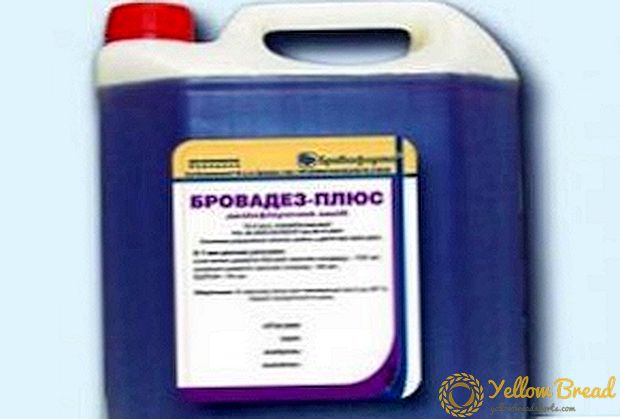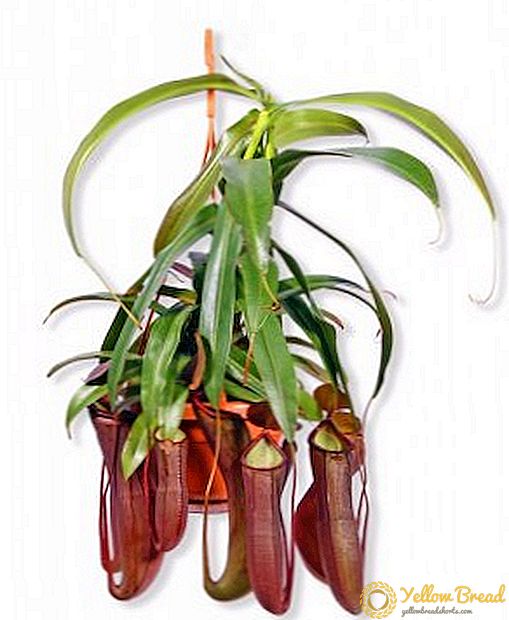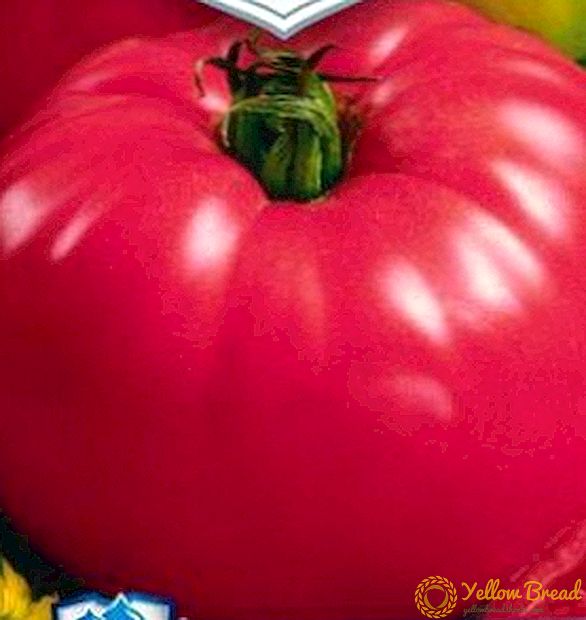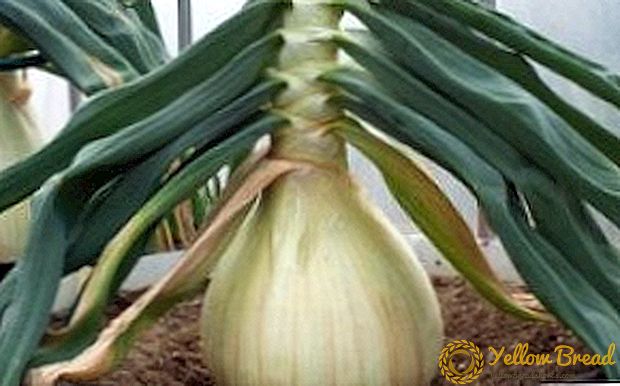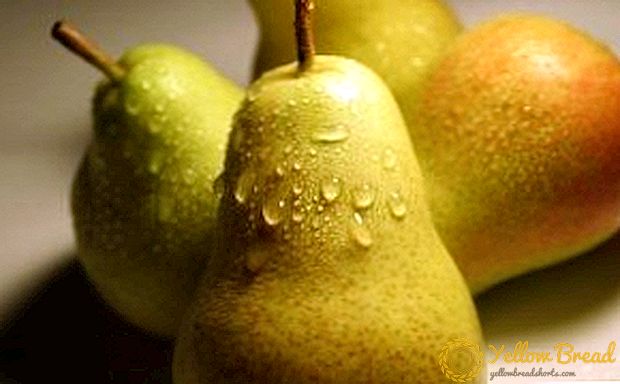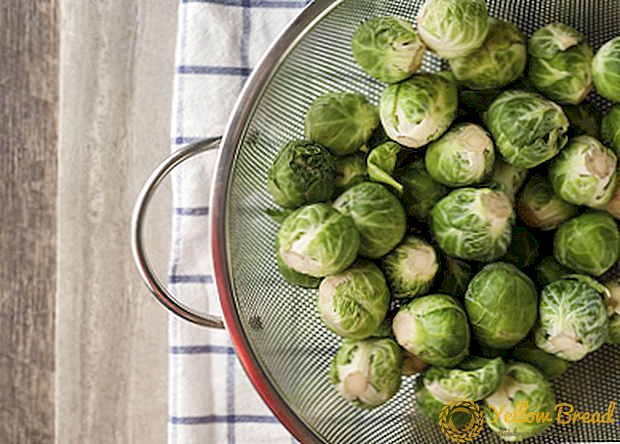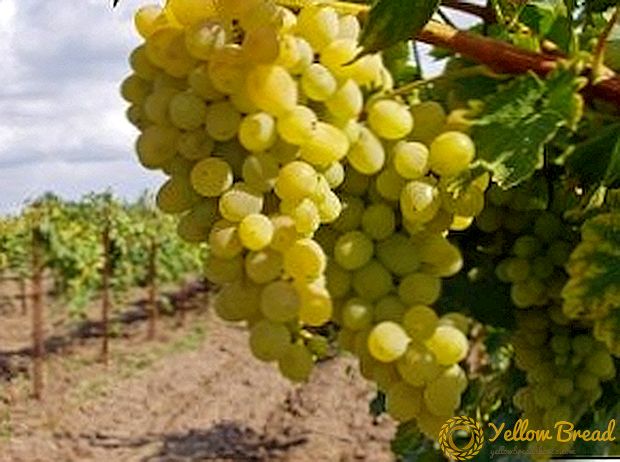
All summer residents have a plan to plant on their site.
A grape bush is a plant that perfectly decorates a plot and also benefits from its growth.
Grapes are a very ancient crop that people cultivate.
The references to the cultivation of this plant in antiquity, are found in areas located near the Mediterranean Sea, in the Crimea and in Central Asia.
Now grapes are a very common crop in the world.
Grape clusters are distinguished by their size, color and variety of forms.
The grape berry is valuable for a person by a variety of important and useful elements.
By consuming grapes, we improve the nervous system, can help ourselves from insomnia and relieve fatigue.
- Basic fertilizers
- Mineral fertilizers
- Organic fertilizer
- Top dressing
- Timing
- Foliar top dressing
- How to apply fertilizer
- How to make foliar feedings
- Tips
Basic fertilizers
Having decided to plant grapes, it is necessary to master how, when, how much, and with what elements it is better to fertilize the crop in order to grow and preserve the planted vine, as well as to get a good berry harvest.When the stocks of the crop run out, we go to the market or to the supermarket for berries and fruits brought from no one knows where, and, accordingly, grown as is unknown.

At the same time, information about the chemistry that fertilizes and protects plants from all sorts of diseases and many pests, as well as avoiding the use of these substances, is beneficial only to exporters of brought fruits and vegetables.
For best yields in their garden, all owners must understand the pests and diseases of garden plants. This will allow the most correct use of preparations for the protection of garden crops, as well as to know when and how many elements each plant needs for its growth.
To begin with, we will understand how and in what amount to fertilize a grape plant for its good and high-quality fertility in its garden. And also what needs to be brought into the earth for its nutrition.
When planting grapes, it is necessary to throw fertilizer into the planting hole. The stock of the necessary substances brought in this way will be useful for the young bush for another 2-3 years. During this period, the bush will form and begin to bear fruit, and the need for culture in nutrients will increase.Grape bush makes a lot of elements out of the ground.
Therefore, every year, for the best harvest and growth of this crop, nutrients are artificially introduced in the right quantity. It can be phosphorus, and nitrogen, and potassium, and magnesium, which are used in various compounds. Meals are divided into two main groups:
1) the main;
2) feeding.
Mineral fertilizers

The yield of any crop, and grapes, too, depends on the size and period of nutrient input into the earth. Remember that the basic substances are applied once, in the early spring, once every 2-3 years, or in the autumn.
Fertilizers based on mineral content divided into two groups:
1) simple
2) complex.
Let's talk a little about them.
Simple minerals They consist of a single macrocell, which can be phosphorus, nitrogen, and potassium. The simple group of minerals containing nitrogen, include urea, ammonium nitrate, sodium nitrate, or sodium nitrate and ammonium sulfate.
Nitrogen significantly affects the development of grapes and its growth. If suddenly in the earth there is not enough of such an element, the growth of the bush is disturbed. The leaves turn yellow and die, clusters develop poorly.If the earth is oversaturated with nitrogen - the leaves of a grape bush grow very large, the fruits increase, and they begin to ripen slowly and become watery, the shoots grow faster, and as a result, they do not tolerate strong decreases in temperature.
Urea is produced by granules, and therefore perfectly soluble in the liquid. It is applied both in liquid and in granules. This nutrient is well absorbed by plants. Urea also affects soil acid.
Granules are usually offered and ammonium nitrate, which is also representative of a number of nitrogen. It holds 35% nitrogen. Ammonium nitrate is highly soluble in water and in soil. If in the area where grapes grow, there is a sour soil, this fertilizer is neutralized with pre-slaked lime. A proportion is used: 1 kg of saltpeter and 600-700 g of lime already quenched.

Composition sodium nitrate determined by the ratio of 16% to 26% (nitrogen and sodium, respectively). This substance is perfectly soluble in water, and in wet conditions - and in the soil.You need to know that the hygroscopicity of sodium nitrate leads to caking during storage, so it is not stored for a long time. This is an alkaline solution, and it is used only on acidic soils, while preferably in combination with the substance superphosphate.
On neutral soils, or with alkaline reaction, used ammonium sulphate (ammonium sulphate) containing 21% nitrogen. This fertilizer is perfectly soluble, and is not washed out of the soil with water. This property allows the use of fertilizer on the overwetted soil. Before use on acidic soil, Amonium is neutralized by quenching with lime, taken in the same proportion as it. During storage, this mass is caked.
An important macroelement that affects the acceleration of the onset of flowering of the vine bush is phosphorus. This element is also needed for the culture of the berries, as it contributes to their rapid maturation. Another phosphorus gives the vine strength for wintering. Fertilizers that contain phosphorus are superphosphate (single and double).

The most popular in a number of phosphoric, is a simple superphosphate, which holds 21% of phosphorus and gypsum. The fertilizer is perfectly soluble in water and is applicable on different types of soil.
Double superphosphate contains phosphoric acid in the amount of 50% of the main content. This fertilizer does not contain gypsum, although the drug is applicable as well as superphosphate. Not bad soluble in liquid.
Another very important in the nutrition of grapes is potassium element. It affects the maturity of the berries and the growth of the vine itself. This substance gives strength to the vine for wintering, helps to endure droughts and diseases. It also affects the sugar content in berry juice and reduces its acid. At the lack of potassium indicate dead edges of the leaves. This group of fertilizers includes potassium salt, potassium sulphate and chloride, potassium magnesia, potassium sulphate and the preparation "Ecoplant".
Potassium salt - representative of a number of potash, which contains 40% potassium. It also contains a lot of chlorine. Potassium salt has a red color. Bring it in the autumn at times and almost never used at other times of the year. Perfectly soluble in water, which is gradually washed out of the soil. Mixing this substance with other elements is allowed.

Fertilizer containing 45-50% potassium is potassium sulfate. This is the best top dressing from a range of potash, which does not contain chlorine.At the plant fertilized by this preparation tastes of berries much improve. Before making it permissible to mix with other elements.
The composition of calimagnese includes 30% potassium, 9% magnesium and some sulfur. According to its physicochemical properties, calmagnezia is a powder soluble in water and soil from crystals. It is used both the main food, and top dressing. The introduction of calimagnese is most effective in light soils that do not contain magnesium.
AT a series of mineral fertilizers that are complex, include complexes of macronutrients of several substances. This group includes:
1) ammophos,
2) nitroammofosk,
3) azophoska
4) nitroammophos.
In ammophos includes nitrogen and phosphorus, a combination of 12% to 50%, respectively. It is well soluble in water.
Nitroammofosk - a substance that contains elements such as nitrogen, phosphorus and potassium, in a combination of 17% / 17% / 17%, respectively. It is used both as a base and as a feeding boost.
Consider a strong azophoska, which contains phosphorus, potassium and nitrogen, in the ratio of 16% to 16% and 16%. It is applicable on different soils. Not caked during storage.
The drug Nitroammophos is a substance that also belongs to a number of complex. It contains nitrogen and phosphorus, taken in combination from 16% to 25% nitrogen and from 20% to 23% phosphorus. Excellent soluble in water. It is widely applied during the main and auxiliary fertilizer.
Organic fertilizer
The organic series includes:
1) animal manure,
2) compost
3) bird droppings,
4) peat,
5) wood ash.
They all contain: potassium, nitrogen, phosphorus and other elements. Organic matter applied to the soil enriches it with various useful elements. This improves the condition of the soil, its thermal and air-water regimes. And with these fertilizers, beneficial bacteria are colonized in the ground. For these reasons, the introduction of organic matter during the laying of vines is compulsory.
The main organic fertilizers:
Stubborn manure, is one of the best soil fertilizers. At the same time, it is important to remember that the introduction of fresh slurry is not recommended, it affects the nitrogen content in the soil. This fertilizer is applied in the fall.
Bird droppings - has a great content of useful elements.It is brought into the ground in the fall, and they are fed by plants in the summer and in the spring. Before making the mass is fermented, and then diluted with water 1: 2, after which it is left for 14 days for fermentation. The finished mass is diluted with water 1: 5, and only after that they can fertilize the bush, at the rate of half a bucket for each plant.

The main, among the fertilizers in the organic series, is compost. This useful mass is quite simple and easy to prepare, guided by the following. Where the water goes well in the rain, they make a pit, hereinafter referred to as a compost, while digging it in an arbitrary length in the form of a trench 1.5–2 m wide and 1 m deep.
Then the remains of plants, animal waste, straw, peat, sawdust wood, home cooking waste are poured into it. For the best maturation, the compost mass is thoroughly mixed, and then rammed. In order to improve its quality and content, any other fertilizer is added to the compost.
Fertilize grapes also peat. But clean it is not used. In peat there are soured compounds harmful to plants. Peat is characterized by acidity and low biological activity.It is usually used during the mulching of the earth.
You can replace potash supplements wood ash. This substance is applied three to five times more than potash fertilizer. The best ash is the ash from burning fruit trees and pruned vine grapes.
Soil is fertilized with organic matter every 2-3 years. Due to its poor solubility, it is produced only in the fall. Each bush give 6-8 kg of fertilizer. Do it in the pre-harvested, near the plant, hole.
In order to determine the required amount of fertilizer, in the fall, after harvesting, the crop is weighed. Knowing the weight of the crop, you can roughly calculate the amount of fertilizer needed to make.
Top dressing

No less important for all plants is the soil dressing. It should be noted that in the case of a clear shortage of certain substances, you can do a small dressing. Then the harvest of berries is achieved in a small amount, but it will be absolutely eco-friendly. How to produce it for grapes, and in what time we consider next.
Timing
Mineral bushes are produced annually, each plant separately, contributing 20-30 g of nitrogen, 40-50 g of phosphorus and potassium substances. First fertilizer carried out in the spring, by making 40-50 g of nitrogen, 40 g of superphosphate and 30 g of potassium per plant. The second - occurs before flowering begins in 10-15 days, by applying to one plant: 40-50 g of nitrogen fertilizers, 50 g of superphosphate and 40 g of potassium. You can also make ready chicken droppings, the amount of 1-2 buckets of solution per plant.
Third fertilizing is carried out in a complex, when the berries grow to the size of a pea. Produce it during irrigation, dissolving 25-35 g of substances per 10 liters of water. The fourth is produced when the berries ripen. They do this by adding 50 grams of potash and phosphate fertilizers to each plant.
Foliar top dressing
Foliar feeding is combined with fungicidal treatment of the culture. In this case, the first time the bush is sprayed before flowering, the second - when the berry began to set forth, the third - during the ripening period of the hron, and the fourth - when the berry became soft. Sprayed in the evening when the wind subsides. It is worth remembering that foliar feeding does not replace the root one, and is additional to the latter.
How to apply fertilizer
Before you begin to fertilize the soil, learn a few rules for the introduction of the fertilizer elements in the soil.There are rules of foliar feeding, and the rules of general feeding of the earth with nutrients and nutrients.
How to make foliar feedings
Spraying The underside of a leaf of grapes is a liquid mixture of nutrients, called foliar feeding. Such processing in the best way allows you to absorb the nutrients that are useful for grapes. In addition, this agronomic reception is mandatory for good crop yields. Spray the culture in such a way that the liquid enveloped the leaves of the bush with small droplets, as well as its shoots.
The most favorable is considered to be an overcast day with an average humidity and air temperature of 18-22 degrees. In such conditions, the sprayed leaves of the plant remain moist longer, and this improves the penetration of the trace elements into the grapes.
Foliar stimulation is produced by the main nutrients:phosphorus, nitrogen, potassium, and also, trace elements: manganese, boron, copper, cobalt, zinc, molybdenum. Today, there are many ready-made preparations that are intended for foliar feeding.
Tips
So, to grow a gorgeous shrub of grape crops, and at the same time, to make it as useful as possible, and bring good fruits, you must follow these basic rules:
1) to feed the plant in a timely manner,
2) correctly and in time to cut the vine,
3) during planting - fertilize it well.
We must not forget that care and love are important in caring for everything alive on this planet. Give the sea warmth to the plant, carefully care for it, and it will thank you with tasty fruits.

